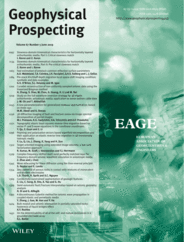
Full text loading...
 , Rudolf Sprik2, Xuan Ca Nguyen3,4
, Rudolf Sprik2, Xuan Ca Nguyen3,4
The zeta potential is one of the most important parameters influencing the electrokinetic coupling. Most reservoir rocks are saturated or partially saturated by natural water containing various types of ions (mostly monovalent and divalent ions). Therefore, understanding how the zeta potential behaves for mixtures of electrolytes is very important. In this work, measurements of the zeta potential for four different silica‐based samples saturated by seven different mixtures of monovalent and divalent electrolytes are then carried out at a fixed ionic strength. It is seen that the magnitude of the measured zeta potential decreases with increasing divalent cation fraction. The experimental results are then explained by a model developed for mixtures of monovalent and divalent electrolytes. The result shows that the theoretical model is able to reproduce the main trend of the variation of the zeta potential with divalent cation fractions. Additionally, the model can fit the experimental data reported in literature well for reasonable values of the input parameters.

Article metrics loading...

Full text loading...
References


Data & Media loading...

